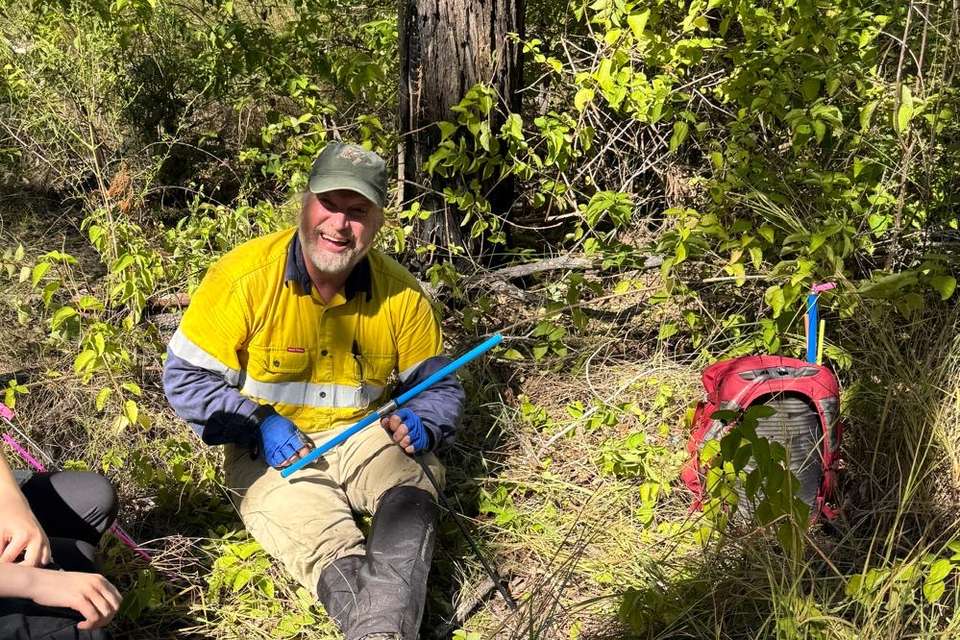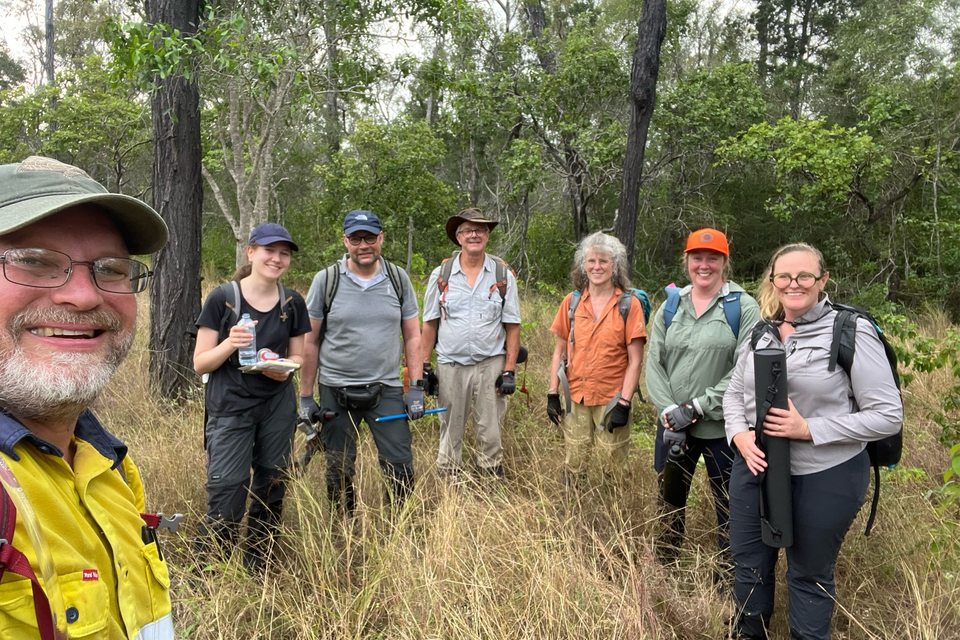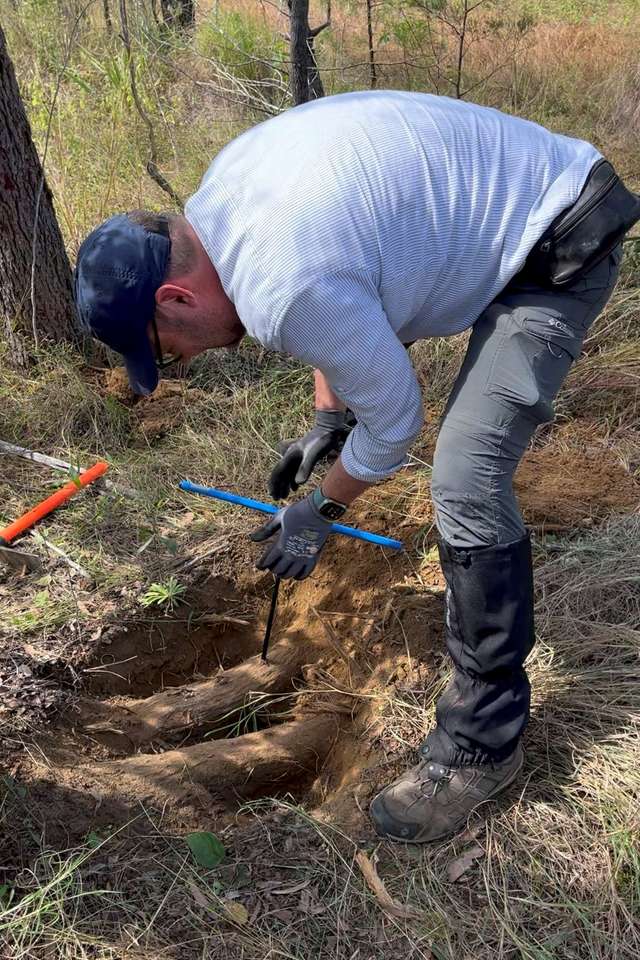North Queensland forests store storm stories




Could the answers to Queensland’s wild weather lie in the wood of ancient pines?
That’s the question driving a groundbreaking project involving CQUniversity Associate Professor Nathan English, who was invited to join an international team of researchers to collect tree-ring samples.
The team included members from the University of Newcastle, University of Tasmania and the GFZ Helmholtz Centre for Geosciences, who spent a week bush-bashing and collecting tree cores in Forty Mile Scrub National Park, 400km northwest of Townsville.

This involved hand drilling 40 cypress pines (Callitris intratropica) and collecting small, 30cm-long cores to count the rings and assess if they could date the trees and use them to answer questions about past climate.
Assoc Prof English who leads the Flora, Fauna and Freshwater Research Cluster at CQU, said undertaking the physically demanding fieldwork was key to understanding the long-term climate trends of the region.
“It took a lot of sweat, swearing and time to get to the tree trunks through lantana thickets and wide savannahs of spear grass, but it’s been worth it to extend the climate and cyclone record of this area back even just another 100 years,” he said.
“In addition to making the dirt park tracks impassable, the recent rains have filled some of the rotten tree cavities with so much water that water poured out of some trees when they were cored.”
The wood cores will be sanded smooth on one side and dated if possible, and the tree-ring width measured.
“If the tree-rings can be dated, then the variation in ring-widths can be used to reconstruct the climate history of the forest at Forty Mile Scrub National Park,” Assoc Prof English said.
“Assessing the wood chemistry may reveal information about the flood and wind history of the site.”
Associate Professor English said initial sampling results will be available within the coming months and contribute to a larger body of research, informing future climate modelling and disaster preparedness efforts for the region.

CQUniversity Australia is a trading name of Central Queensland University
ABN: 39 181 103 288
RTO Code: 40939
CRICOS: 00219C
TEQSA: PRV12073